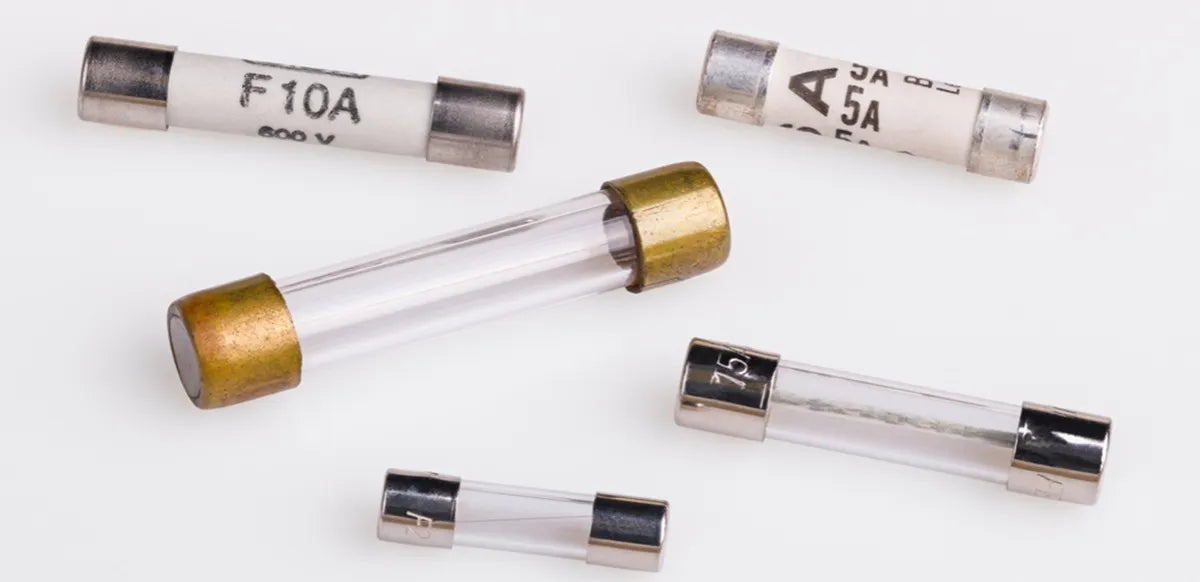Hey there, floor lamp enthusiasts! Ever pondered the tiny but mighty fuse in your lamp's circuitry?
But why should you care, you ask? Picture this: flickering lights, electrical hazards, or worse, a fried bulb. Yep, all the potential consequences of using the wrong fuse size.
Fear not, though, because we've got your back with clear-cut guidance on selecting the perfect fuse size for your floor lamp.
So, let's dive in.
Key Takeaways
For a floor lamp, the recommended fuse size typically ranges from 3 to 5 amps. However, it's essential to check the specific requirements of your floor lamp to ensure the correct fuse size for safe operation.
Factors Influencing Fuse Size Selection
1. Wattage of the Floor Lamp
The wattage of your floor lamp is a crucial determinant of the fuse size needed. Higher-wattage lamps require larger fuses to handle the increased electrical load. It's essential to match the fuse rating with the wattage of your lamp to prevent overload and potential hazards.
2. Voltage Requirements
Matching the voltage of the fuse to that of your floor lamp is paramount. Using a fuse with a voltage rating lower than that of the lamp can lead to inadequate protection, while a higher-rated fuse may not trip in case of a fault, posing safety risks.
3. Type of Bulb
Different types of bulbs have varying power requirements, which directly impact fuse size selection. Incandescent, LED, and CFL bulbs each draw different amounts of current, necessitating corresponding fuse ratings.
4. Additional Features
Consider any additional features or components in your floor lamp, such as dimmers or integrated outlets. These elements can affect the overall electrical load and may require adjustments to the fuse size.
General Fuse Size Recommendations for Floor Lamps
The most common fuse sizes used for floor lamps are 3, 5, or 10 amps. The specific size required will depend on the wattage and power requirements of the lamp. As a general rule of thumb, smaller lamps with lower wattages may only require a 3-amp fuse, while larger lamps with higher wattages may necessitate a 5-amp fuse.
Checking Specific Requirements of Your Floor Lamp
Consult the User Manual
The user manual that comes with your floor lamp is the best place to start when determining the correct fuse size. Look for any information regarding fuse specifications, including the recommended amp rating. If you no longer have the manual, try searching for it online using the model number of your lamp.
Check the Lamp's Label
Many floor lamps have a label or sticker on the base or socket detailing important information about the lamp, including the maximum wattage and voltage rating. Sometimes, the recommended fuse size may also be indicated on this label.
Examine the Plug
Take a close look at the plug of your floor lamp. Some plugs have information stamped or printed on them, including the fuse rating. You may need to use a magnifying glass to read the fine print. If you can't find any information on the plug itself, you can also try opening the plug (after disconnecting it from the power source) to inspect the fuse directly.
Inspect the Fuse Holder
If your floor lamp has a replaceable fuse, you can check the fuse holder for any markings or labels indicating the correct fuse size. The fuse holder is typically located near the plug or within the lamp's base. Be sure to switch off and unplug the lamp before opening the fuse holder.
Contact the Manufacturer
If you're still unsure about the correct fuse size for your floor lamp, consider reaching out to the manufacturer directly. They should be able to provide you with accurate information regarding the recommended fuse rating for your specific model.
Seek Professional Help
If you're not comfortable or confident in determining the correct fuse size for your floor lamp on your own, it's always best to seek assistance from a qualified electrician.
Common Questions and Concerns about Fuse
Can I Use a Higher Amp Fuse?
No, Fuses are designed to protect circuits from overloading and overheating. Using a higher amp fuse can compromise safety by allowing too much current to flow through the circuit, increasing the risk of electrical issues or fire.
What Happens if the Fuse Size Is Incorrect?
Using an incorrect fuse size can have serious consequences. If the fuse is too small, it may blow frequently, disrupting the lamp's operation and potentially causing damage to the electrical components. On the other hand, using a fuse that is too large can overload the circuit, posing a fire hazard.
Can I Use a Lower Amp Fuse for Better Protection?
No, using a lower amp fuse, like a 1-amp fuse, doesn't provide better protection for the lamp. Using a lower amp fuse may not handle the lamp's current, leading to frequent blowing or, worse, posing a fire hazard.
Are All Fuses Interchangeable?
No, not all fuses are interchangeable regardless of their amp rating. Some may think swapping a 1-amp fuse for a 3-amp or 5-amp one is okay, but it's not. Fuses should always match the manufacturer's specifications. Using the wrong amp rating could jeopardize safety and functionality.
Where Can I Find Replacement Fuses?
You can find replacement fuses at hardware stores, home improvement centers, or online retailers. However, it's crucial to use the correct size specified by the manufacturer. Always refer to the lamp's instruction manual or consult a qualified electrician if unsure.
Maintenance and Safety Tips
Regular Inspection
Remember to inspect your floor lamp regularly for any signs of wear or damage. This includes checking the fuse and all electrical components to ensure everything is in proper working condition.
Fuse Replacement
If you find that the fuse in your floor lamp has blown, don't worry, it's a straightforward process to replace it.
- First, make sure the lamp is unplugged to avoid any electrical hazards.
- Then, locate the fuse compartment, usually located near the bulb socket.
- Carefully remove the old fuse and replace it with a new one with the same amp rating.
- Once the new fuse is in place, reassemble the lamp and plug it back in.
- Remember to test the lamp to ensure it's working correctly before use.
Professional Assistance
If you're unsure about replacing the fuse yourself or if you encounter any electrical issues beyond your expertise, it's always best to seek professional help.
Before You Go
Wondering how to enhance your floor lamp experience even further? Check out our comprehensive floor lamp tutorial, where you can uncover a wealth of tips and tricks to elevate your lighting game.
We'd love to hear your questions and thoughts in the comments section below!









Leave a comment
All comments are moderated before being published.
This site is protected by hCaptcha and the hCaptcha Privacy Policy and Terms of Service apply.